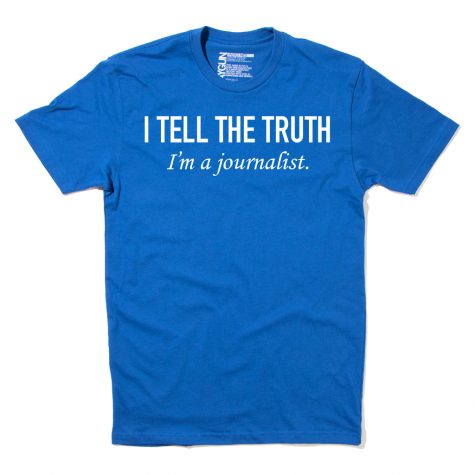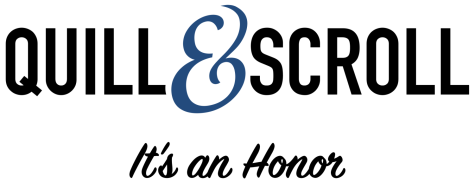The Weekly Scroll
October 28, 2019
News, tips and advice from Quill and Scroll
The Lede
So what’s all this about impeachment, then?
At this point, it appears President Donald Trump will be impeached by the U.S. House of Representatives. Yet so many Americans — including other members of the U.S. Congress — seem to have some confusion over what the actual process looks like.

“Peaches” by Vincent Balderas on Unsplash
Last week provided a panoply of highly dramatic moments that felt as if the House Intelligence Committee and its chair, Rep. Adam Schiff (D-California), were moving closer to finding evidence of Trump’s alleged misconduct as president.
- U.S. diplomat William Taylor testified Tuesday to the committee, and in his opening statement made it clear that the president had predicated U.S. funding to Ukraine on whether its new president would open an investigation into Democratic presidential candidate Joe Biden and his son Hunter Biden. The funding had been promised by the U.S. Congress to Ukraine, meaning the president has no right to make it dependent on something the president wants done.
- His testimony came on the heels of the Oct. 11 appearance of former U.S. Ambassador to Ukraine Marie Yovanovitch. She claimed that she was ousted from her position because of a “concerted campaign against me” by the Trump administration, which disliked her commitment to rooting out corruption in that country by the previous pro-Russian Ukrainian government.
- On Saturday, a U.S. State Department official corroborated Yovanovitch’s story, saying that her ouster by the Trump administration created “chaos” for the U.S. in its relationship with Ukraine.
- To counter the Democrats’ impeachment inquiry, Rep. Matt Gaetz (R-Florida) led a group of Republican lawmakers to the basement of the House, where testimony is being heard in a secure facility. Despite 45 Republican representatives sitting in on the meeting, Gaetz and his colleagues argued that the secret process is unfair to the president because he can’t hear the testimony and respond to any charges being made. Even a daily newspaper from Gaetz’ district in northwest Florida disagreed with his stance.
Do your readers know enough about the process of removing a president? Can they make sense of what’s going on?
In short, “impeachment” simply means that a House committee has found enough evidence to bring articles of impeachment to the entire House to vote on. Even if a majority of representatives vote to impeach President Trump for “high crimes and misdemeanors” — the floor established by the U.S. Constitution — then the U.S. Senate is obligated to hold a trial, over which U.S. Supreme Court Chief Justice John Roberts would preside. In order to convict the president, two-thirds of the Senate would have to vote to convict — that’s 67 members. Of the 100 Senators, 53 are Republicans, 45 are Democrats, and two are independent. That means 22 senators from the Republican party or a combination of Republicans and independents would have to side with a solid Democratic delegation to remove the president.
If you need a quick primer, here’s the best roundup we’ve found.
Former ISIS commander is killed in U.S. raid
President Trump Sunday announced that a U.S. military mission successfully led to the suicide of former ISIS leader Abu Bakr al-Baghdadi, who detonated a suicide bomb as he was chased by U.S. Army dogs. Also killed were two of Baghdadi’s wives.
“The thug who tried so hard to intimidate others spent his last moments in utter fear, in total panic and dread, terrified of the American forces bearing down on him,” Mr Trump said. “He was a sick and depraved man. He died like a dog, he died like a coward.”
It’s An Honor
Official Quill and Scroll video!
Discover the rich history behind Quill and Scroll’s founding principles and organizational practices. Click that play button below to join our journey, understanding how we developed and progressed over the years. From 1926 to today, we are an organization dedicated to honoring quality student journalist work, providing students and their advisers with resources to do that great work and have it recognized.
Video accredited to Roman Slabach from The Daily Iowan.
 “I TELL THE TRUTH” t-shirts available for your staff
“I TELL THE TRUTH” t-shirts available for your staff
Now is the time to order your Quill and Scroll “I TELL THE TRUTH — I’m a journalist” t-shirts. As you know, “Truth” is the first pillar upon which Quill and Scroll was founded in 1926.
Every time we get to 100 t-shirts ordered, we’ll print up a new batch and ship them to you. All profits will go to the Quill and Scroll Scholarship Fund, which benefits Quill and Scroll members who plan to study journalism in college.
Just fill out the form at this link to tell us how many you want in each size. We’re offering a unisex style and a female-fit style. RAYGUN is printing the shirts for us, and you can read about their “USA-made” t-shirts here.
Of course, we’d like every Quill and Scroll member to wear one, but these shirts are good for any journalist.
We will accept only credit card payments, and there’s a per-order charge for that, so order all your t-shirts at one time and save!
Yearbook Excellence Contest closed!
The 2019 Yearbook Excellence Contest is underway, and Quill and Scroll has sent out all entries to their judges. Find out how your work stacks up against those of your peers from schools across the U.S. and Canada in the coming month.
Quill and Scroll on the road
Quill and Scroll Executive Director Jeff Browne will be at the Nov. 21-23 in Washington, D.C. for the National High School Journalism Convention!
And if you see Jeff, stop by his table to say “hello,” or go to one of his sessions.
What’s Viral?
What’s with all the fake identities?
If you’ve followed President Donald Trump’s career, you know that he used to appear on New York radio shows pretending to be a publicist named “John Barron.”
Now we learn that former presidential candidate and current U.S. Senator Mitt Romney (R-Utah) made up a fake Twitter account to monitor social media without having to use his real name. Romney’s adopted sobriquet? “Pierre Delecto.”
(For the record, Quill and Scroll’s founding principle is “truth,” so we’re firmly against public officials using fake names in any scenario.)
The big reporting news regarding Romney’s fake name is how a journalist found it. Here’s how The Atlantic’s Ahsley Feinberg did it.
Halloween didn’t used to be about fear

Photo by Max Rovensky on Unsplash
Ask your parents — make that your grandparents, too — about their experiences on Halloween.
If they lived in the country, it probably meant a simple party at someone’s farmhouse that included bobbing for apples, slow dances (no touching anything other than hands!) and other “fun” games.
If they lived in the city and suburbs, some nice lady might invite them into her house for a warm cookie just out of the oven — AND NOTHING ELSE!
So when did Halloween get to be so scary. Here’s an intriguing look at how Halloween started to change about 50 years ago.
Vermont girls soccer team gets yellow cards for t-shirts
A group of high school soccer players received yellow cards in a game this month for revealing t-shirts under their jerseys that support the U.S. Women’s National Soccer Team and its quest to receive the same amount of pay that members of the national men’s team receive.
Burlington High players celebrated a tie-breaking goal with five minutes left it their game by removing their blue game jerseys and revealing t-shirts that read “#equalpay” on them.
All players received yellow cards, which means they were penalized but not removed from the game.
The U.S. Women’s National Soccer Team won the 2019 World Cup by defeating the Netherlands. The U.S. Men’s National Soccer Team is still working to make the field of 32 nations for the 2020 men’s World Cup. They did not qualify for the 2016 competition.
Just a Thought
Media literacy expert Megan Fromm speaks with Q&S
We leave you with this excerpt from the Q&S Q&A with media literacy expert Megan Fromm, who is also the journalism adviser at Grand Junction HS in Colorado. Quill and Scroll journalist Nichole Shaw interviews Megan.

Photo by Austin Distel on Unsplash
Nichole: Before we delve into media literacy, I want to talk about how the general media can make sure that audience members understand how to navigate the media. Could you speak to that?
Megan: I think that we’ve never lived in a time that has so much potential for the power of media. And then I think we’ve never lived in a time where media is more weaponized. And so I see a lot of citizens are trying to navigate those feelings — about day-to-day life and about what media is good media and what news is good news to follow. I also think that it looks like information overload, because it’s everywhere. And then I also think it manifests itself in ways that just polarize people’s opinions and the landscape that we’re living in right now.
My general sense from teaching in and just from being in the field is people want to get it right. You know, they want to feel like they’re getting that information and not biased information. And they just don’t necessarily know how to do that.
N: How would you define media literacy?
M: I like to define media literacy as the process through which a citizen engages with media, that leads them to a positive and truthful outcome. So for me, it’s more of a process and not really like an endpoint. It doesn’t ever stop. It’s a process that you engage in, much like you would engage in a healthy and appropriate gym routine.
And media literacy is a mind routine; it is a habit of mind that you just are constantly undertaking when you’re engaging with media. And hopefully in doing it that way and approaching it that way, you get to an outcome that is better for you as a consumer and better for you as a citizen.
When digital journalism started in this field and was really growing eight or nine years ago, media literacy was sort of seen as an outcome. And I think it’s really important to think of it as a process. You’re never fully media literate. Every time a new media comes out, every time a new platform or an algorithm changes, you have to reapproach your process, and you have to set new boundaries, and you have to implement new routines.
N: So what would you say other journalistic principles are that fall under the ability to practice media literacy?
M: I think that it’s similar to fairness and accuracy—the responsibility of a journalist to have to set aside their personal bias or their own preconceived notions. And we want our citizens to do that, too. So that they can be open-minded and take in new information.
And, you know, so much of this is why, as an educator, if you really want to teach media literacy, just teach journalism. It’s the same concept, and then you’re also exposing young people and citizens to what quality journalism looks like, and now they’re more likely to pay for it and engage with it.
N: They do go hand in hand. I’d like to talk about some of the things that you’ve been teaching and advising with your own students at Grand Junction High School about media literacy.
M: I’m actually teaching a new class called “Social Media Writing and Design.” We’ve been spending the last four or five weeks with those foundations of new literacy and kind of walking students through the need to understand the big picture. And so an introduction to it, are the privacy and the user agreements that they as students opt into, for their media usage. You know students and nobody really reads those things. So, scrolling down and actually looking at the data that a company is collecting, and what you’re allowing them to do when you agree to use their platform, has been really interesting for my students.
N: What does media literacy look like for high school journalists?
M: I think that it looks a little different for my student journalists to the publications team. In class, we get the luxury of studying and getting a taste. It’s very self-determined. And we kind of see where our curiosities go, since we have the time to do that. With student media, you’re working on real deadlines, and you’re working with real scenarios, real stories. The media literacy component starts the moment we start generating story ideas.
We think about things like representation when they come up with their list of stories for the week: Are they representing the student body? Is there diversity in age, in race, in interest level and things like that? That’s the start of it. If they can’t think broadly about news and media creation for all of their audience, then they’re really not doing the job. And that’s part of a media literacy process. And I think that happens when you are in the audience, and you’re consuming it. You’re thinking, was this meant for me? Was it written by somebody who actually truly understands what it’s like to be in my shoes? And then it’s something that you have to think about from the creation side. Are we thinking thoroughly about our audiences and how best to connect with them?
Ethics are a big part of journalism, and the same ethics are reflected back in media literacy when we think about quality media looks like. It should be ethical, it should be representative and it should be truthful.
N: What are common problems that people, especially youth and teenagers, fall victim to with the consumption digital news and media?
M: I think it is really hard for a young person whose life is a little more contained—both physically and mentally to their campus or to their neighborhood or community—to look at the news and see where it impacts them. I think that it’s important we don’t dismiss that. Our journalism has a really hard time connecting with young people where they’re at. And young people don’t feel reached by journalism.
To me, the biggest issue with their digital media consumption, is they’re just not getting information. They don’t find the relevance in international news and global news, and even local news, you know? It doesn’t speak to them, and I think that is a huge fault of journalists. Journalism is written for adults. It’s written for decision makers and voters and community spenders, and it’s not really aimed at young people. And students know this. So, they’re not going to engage as much as they wish they could in actual news consumption. Their filter bubble is pretty small.
It’s pretty much like their friends or Tik Tok or kind of whatever app they like today. My experience with teenagers has been that there’s not an easy way to solve that. And trying to sort of foresee the news never works. It doesn’t make them more interested. It just makes them tune out. So one approach in the last few years has been to shift from a really broad, “hey, let’s watch the news every day” to picking one thing you care about in this world and that you’re going to keep tabs on, follow it and be able to talk to the class about it and share what you know. And that’s been a little bit more successful.
But something we really need to rethink is what our schools look like. I mean, students are not going to be interested in community news if they don’t even feel part of their community? We have these systems set up where kids spend eight hours a day in a building that really isolates them from their community. You cannot teach a kid to be civic minded, while also keeping them out of those civic spaces.
Young people don’t relate to things if they’re in a different bubble. And so, we have to build those bridges for them with like, why this story about your community matters. Let me show you why we need a community garden. Why not? Let’s go down there and look at it, and then let’s go down to the homeless shelter and understand where their community members are coming from and what happens at a food bank.
When you put it in their lives in real time, that I think is when news becomes meaningful to them and they start to care and broaden their horizons. To me, it’s a big ask of our schools to teach this and to encourage journalism, but to also bring in those other experiences to get kids to navigate their communities. They way they understand the stakes of journalism and that the stakes are really high. It’s real to them that way, as opposed to just abstract concepts.
N: That’s something that really resonates with me, still, as a young journalist. I write for a bunch of different publications now. And the fact that I know that my words matter to someone, because people will email me or contact me, or even stop me in the street to talk about something I wrote about, makes me happy. I know my voice is being heard and theirs is as well by me listening to them and responding to them.
So, what’s the most important thing that you think young journalists should understand about media literacy when moving forward in their journalistic careers?
M: I think it’s really important for young people to understand that they can’t please everybody. In fact, their job is going to require them to deal with things that perhaps adults wish they weren’t going to deal with. And I think, even if the confidence level isn’t there yet to do those things, they just need to take it just one step at a time and know that they’re supported by their teachers and other adults who believe in their rights. Taking it one step at a time and not giving up is so important. It’s not an easy job. It is not for the faint of heart. It takes a lot of courage. So, I think it’s kind of about attitude, perhaps even more than skill, and the attitude of persevering through criticism, persevering through people who want to diminish what journalists do and diminish the importance of it. It’s also about knowing that there’s a lot of value in [journalist] work. And I think that that just comes as a leap of faith a lot of times. So, I would just want young journalists to have that faith and to take that leap, because there are people who will support them.
I think it’s also important for education communities to recognize that one class, or one experience, is not going to provide these skills. We need to find a way to infuse it throughout the curriculum. I think that the more schools realize that, the better we will serve our students.
